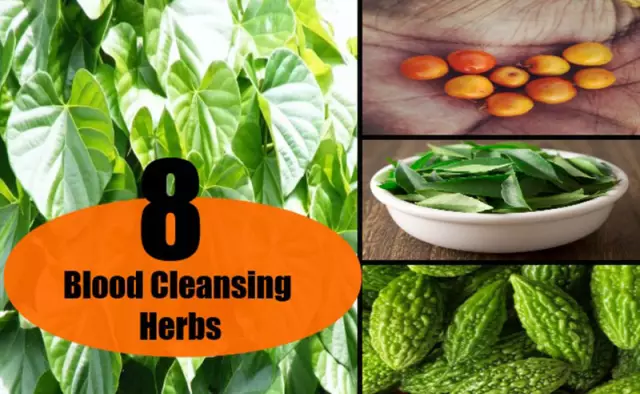- Author Curtis Blomfield [email protected].
- Public 2023-12-16 20:44.
- Last modified 2025-01-23 17:01.
There are many threats that can cause significant harm to the human body. Vivid examples include various types of infections and even a cancerous tumor. And it is important that, along with the usual methods of treating such diseases, modern scientific centers and clinics are beginning to use dendritic cells. Their impact causes amazing changes in the affected organism due to artificial stimulation of immune activity.
Dendrite cells
The fact how successfully a person will be able to carry out his life activity largely depends on the state of his immune system. Without this protection, the body would be extremely vulnerable to even minor diseases by modern standards. And immunity plays a particularly important role in the difficult task of confronting cancer cells. Moreover, such a struggle for the he alth of the body occurs constantly.
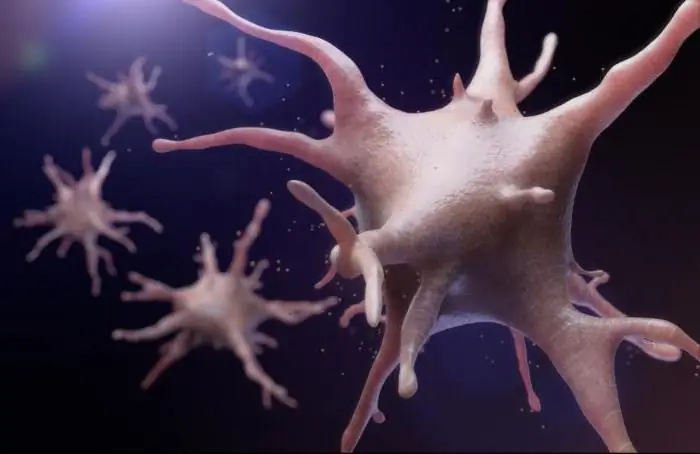
If you pay more attention to the defense mechanisms of the body, you can find that one of the important components of this system are antigen-presenting cells. They, in turn, are divided into three key groups:B-lymphocytes, macrophages and dendritic cells. And since the article is devoted to the latter, the main attention will be paid to them.
If you translate the word dendron from Greek, it will mean nothing but a tree. This term was used to refer to the type of cells in question, for the reason that they have a characteristic branching structure.
Features
This type of cells should not be classified as phagocytic elements, but their role in the process of deploying the immune response can hardly be overestimated. Cells of this type may or may not be mature. Moreover, the latter are often fixed in the skin.
Dendrite cells may or may not be of bone marrow origin (myeloid and lymphoid).
Localization of the lymphoid species is the spleen, thymus, lymph nodes and blood. Their mission in the thymus deserves attention, since they are responsible for negative selection there. This process should be understood as the removal of T-lymphocytes, which have the ability to react with their own antigens.
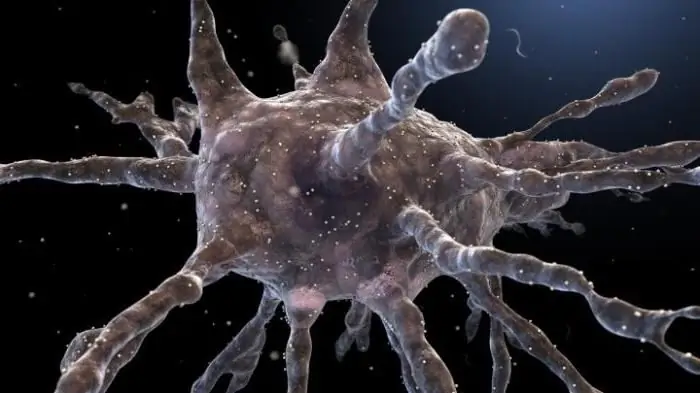
As for myeloid cells, they are found in interstitial tissues, mucous membranes and skin. However, they can be described as mobile.
Cells of non-bone marrow origin, in turn, are localized in the follicles of lymphoid organs. They also represent the antigen of the B-lymphocyte, and carry immune complexes on the surface.
Building
Before paying attention to how dendritic cells are treated, it is worth paying attention to theirstructure. They can be described as a heterogeneous group, which is divided into two types with different functions. Nevertheless, both varieties have a similar appearance.
This type of cells has the following visual features: they are round (in some cases oval) and quite large. At the same time, their shape is branched, uneven with process contours. They have a nucleus, and the cytoplasm inside them is filled with organelles. As for the surface, many receptors are concentrated on it.
There are a lot of such cells in the body and they are found in almost all tissues and organs.
Dendrite cells: functions
As mentioned above, the main task of this type of cell is to present the antigen. This term is used to refer to the process during which the alien element is first destroyed, and then the components that make the attacked particle alien are eliminated (taken away).
By the way: phagocytosis is used to neutralize dangerous elements. After the potential threat has been eliminated, the captured antigens are transferred to other immunocompetent cells. Such transportation is needed to transfer information to all elements of the security system. In simpler terms, dendritic cells transmit a message to the immune system that a danger has been detected. As a result, the defense is brought to a state of, so to speak, combat readiness and purposefully blocks the designated threat.

When it comes to protection against infections, it is worth paying attention toattention to such a variety of dendritic cells as plasmacytoid elements. The same cell lineage is involved in their formation as in the case of lymphocytes. This type of cell blocks the possibility of infection progression through the release of interferons.
Influence process
It is worth noting the close relationship that dendritic cells have with immunology and cancer treatment.
In this case, it is initially important to pay attention to the fact that such cells are easily reproduced in modern laboratory conditions. To achieve this result, it is necessary to separate monocytes from other blood elements. This stage is also not technically difficult. This is followed by the impact on the cell culture through certain factors, and within a few days, stem cells or monocytes turn into dendritic elements, which was the original goal.
Now there are many clinics offering dendritic cells as a treatment tool. Immunology has stepped so far forward that such a technique can effectively influence rather difficult diseases, including oncological ones.
Moreover, after certain studies, it was proved that the introduction of elements of the immune system can give a powerful positive effect in the treatment of patients who suffer from chronic infections, and more than one year.
A little about such a serious problem as a malignant tumor
In order to better understand how cancer is treated with dendritic cells, there areit makes sense to pay attention to the problem itself.
So, if you look at the human body more closely, you can find a well-known fact: the body consists of cells, or rather, their whole system, where each component performs a specific function. Sometimes it happens that control over the growth, mobility and size of a particular group is lost. The consequence of this loss is the rapid and uncontrolled reproduction of such cells, which begin to actively penetrate into the tissues located in the immediate vicinity.
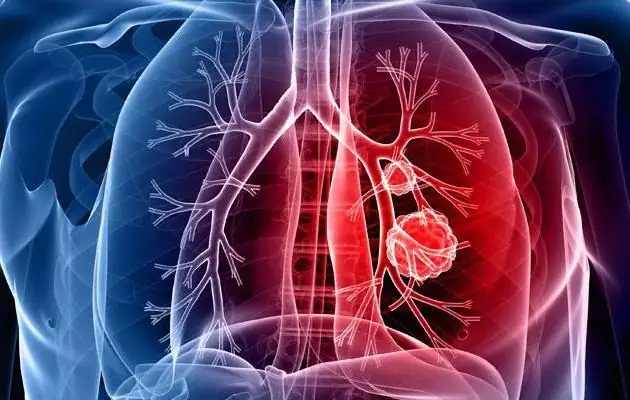
The story of the body's damage by cancer cells does not end there: they enter the bloodstream or lymphatics, and then spread to other parts of the body, forming metastases and daughter tumors. It is also worth noting the fact that there are a lot of tumors themselves - more than a hundred types. And each of them is unique in its own way.
Based on the information that doctors have at the moment, it can be confidently stated that one of the key factors determining the fate of a tumor is the human immune system. This is why dendritic cells against cancer are an effective strategy for fighting tumors.
What treatment looks like
Special progenitor cells are isolated from the patient's blood. They are necessary for the subsequent growth of dendritic elements. After that, all the necessary conditions are created so that the necessary qualities, without which the further development of the material is impossible, are preserved.
Specialists are waiting for the phase during whichmaturation occurs, and tumor structures obtained by genetic engineering are added to the cell culture. The use of the so-called fragments of the tumor of the patient himself is not excluded. Next, the precursor cell captures a dangerous element, followed by a change in its structure.

The value of this process lies in the fact that dendritic cells begin to more accurately recognize the sign characteristic of the tumor. Moreover, this experience is transferred to the entire immune system.
The final stage is the introduction of dendritic cells into the patient's body. Vaccines are one common method for accomplishing this task. After this procedure is completed, there is an active movement of cells into the lymph nodes and the subsequent activation of cytotoxic T-lymphocytes. These performers come into contact with the elements of the tumor, completely destroying them.
After the threat has been detected and recognized, its search begins throughout the bloodstream and tissues of the body. As soon as the target is found, the executor cell inflicts fatal damage to the hostile element and notifies the immune system of this fact through the production of special substances.
This is such a complex yet effective treatment cycle made possible by research in the field of immunology.
Vaccines based on dendritic cells
There are several effective preparations that include the action of the principle described above. One example is the Stivumax vaccine. Its main task isstimulation of a full response of the body's immune system to cancer cells, which contain mucin-1 glycoprotein. This is a fairly common antigen.
At the second stage of testing, this drug showed decent results, although, of course, there are certain contraindications.
In order to have the desired effect on the body's defense systems, the doctor must inject the vaccine into the subcutaneous tissue of the patient's abdomen. Already 15 minutes after the completion of this procedure, the patient can go home.
But at the same time, it is important to constantly visit a doctor for blood tests - this will allow you to get a clear picture of the processes that occur in the immune system. If all is well, then the concentration of executor cells that destroy the tumor should increase significantly. As soon as their levels start to drop, you need to re-vaccinate.
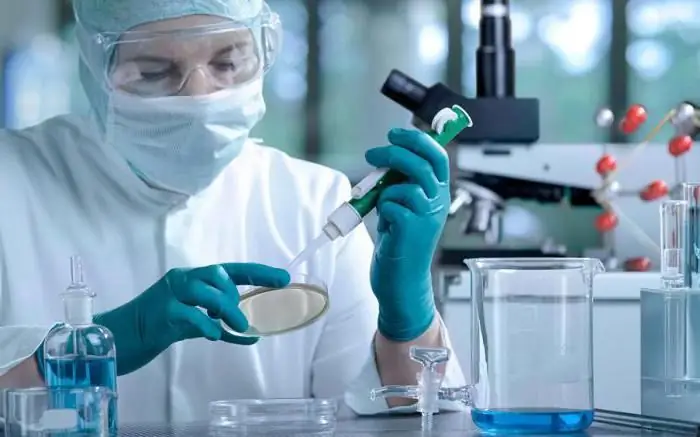
Note that cancer is not the only problem that dendritic cells can solve. The role of this treatment system in antimicrobial protection is also difficult to overestimate, since it is able to activate the immune system, which, in turn, leads to the complete destruction of the infection.
Possible side effects
Vaccination, in addition to a strong protective effect, can lead to some negative consequences. In fact, we are talking about manifestations that accompany the general reaction of the body's immune system. During this process, the release of those substances that takeinvolvement in inflammatory infectious diseases.
If we talk about specific signs, it is worth mentioning weakness and fever. In some cases, reddening of the skin is possible at the site where the injection was made. Sometimes you have to deal with enlarged lymph nodes.
Benefits of Dendritic Cell Treatment
If we consider such methods of fighting a cancerous tumor as radio- and chemotherapy, then one cannot fail to notice the obvious - the body at this time is experiencing serious stress. But in the case of dendritic cells, all that is used for treatment is the person's own defense system and its specific components. The difference in approaches is more than noticeable.
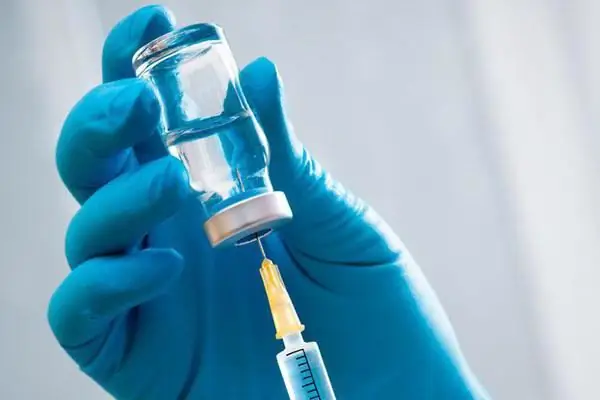
And although this technique still has side effects, they are relatively rare, and the damage from them cannot be called significant. Another significant advantage of such therapy is that all recovery processes can be carried out on an outpatient basis, which means that the patient does not need to constantly be in the clinic.
Russian treatment centers
In the CIS, research is being conducted aimed at creating vaccines based on dendritic cells. Novosibirsk is one of the cities where the corresponding centers are located. And if we consider this region, then it is worth mentioning the Research Institute of the Siberian Branch of the Russian Academy of Medical Sciences. It is at this institute that a vaccine is being tested that can resist the tumor. Good results have been obtained in the treatment of colorectal cancerresults.
But this research institute is not the only place where research is being done that uses dendritic cells. Treatment in St. Petersburg is also at a decent level and meets European standards. Speaking more specifically about the use of an individual vaccine, it makes sense to recall the RNHI them. Polenova.
In general, more and more attention is paid to this issue in Russia. And such a forecast, of course, can be considered optimistic.
Results
This type of overcoming a cancerous tumor, such as the use of dendritic cells, can be called a fairly young technique. But that doesn't change the fact that its popularity in academia is skyrocketing due to its high level of effectiveness.
Moreover, there are he alth insurance funds in Germany, as well as insurance companies that have already begun to cover the costs associated with such treatment.




